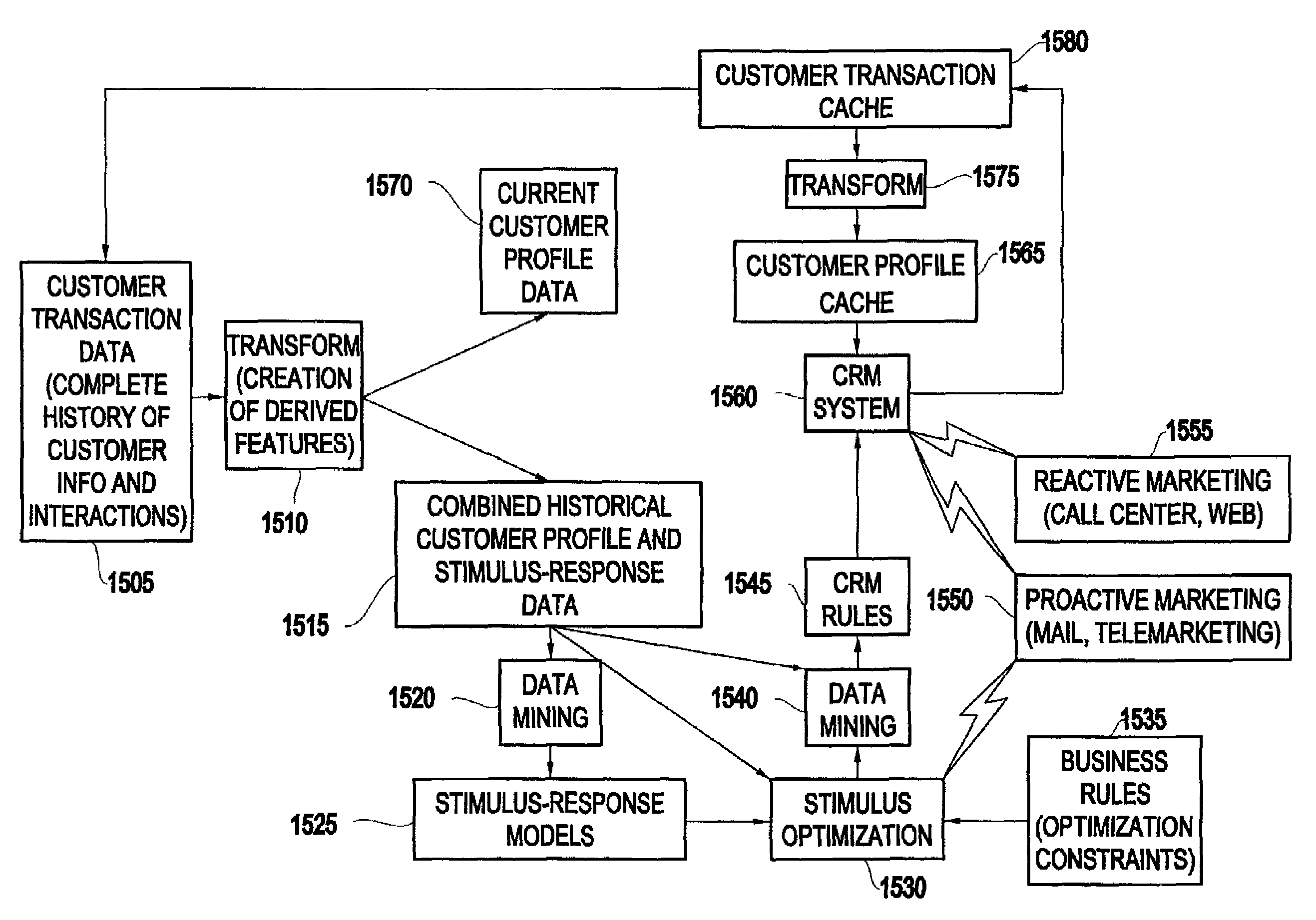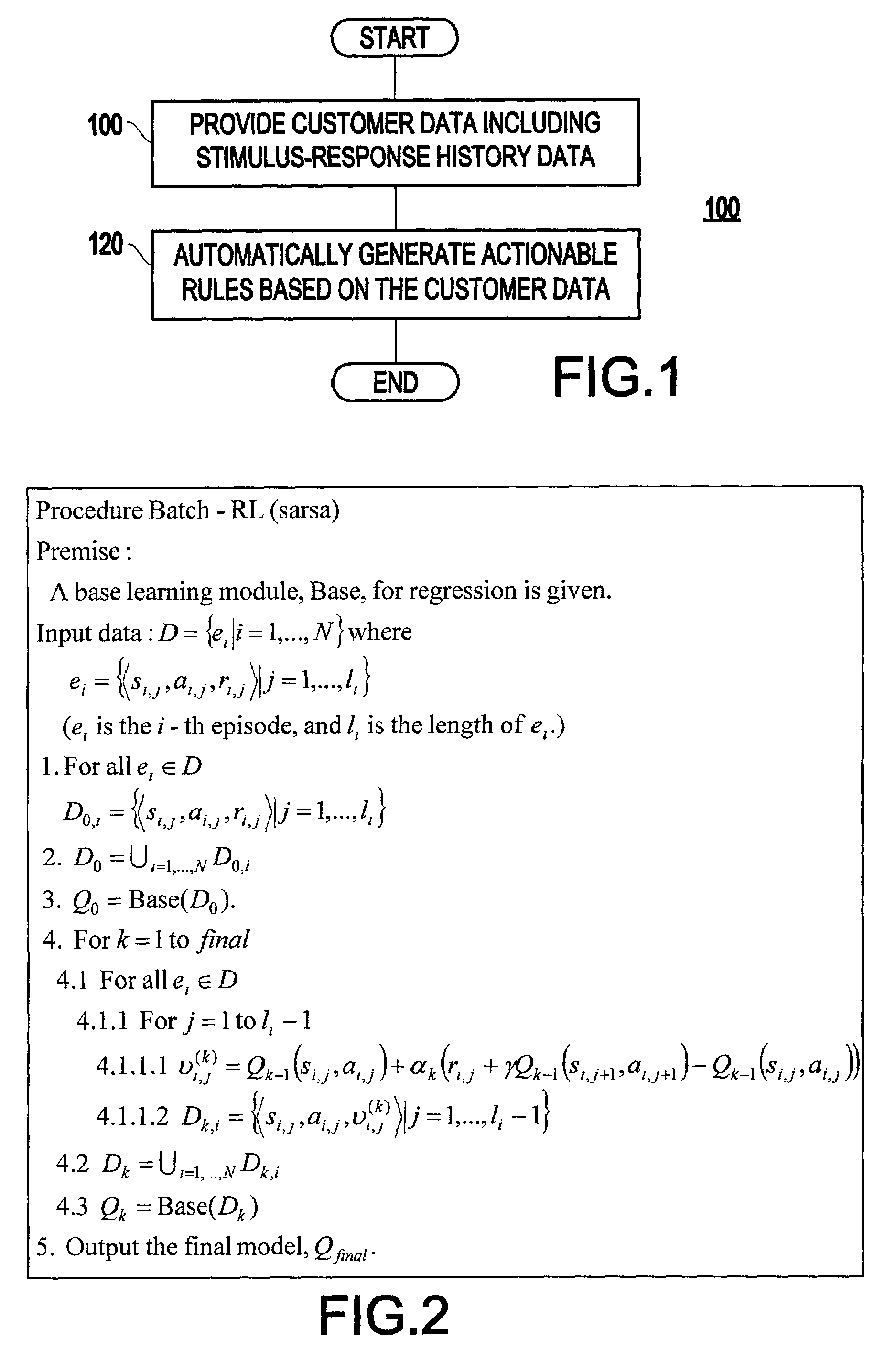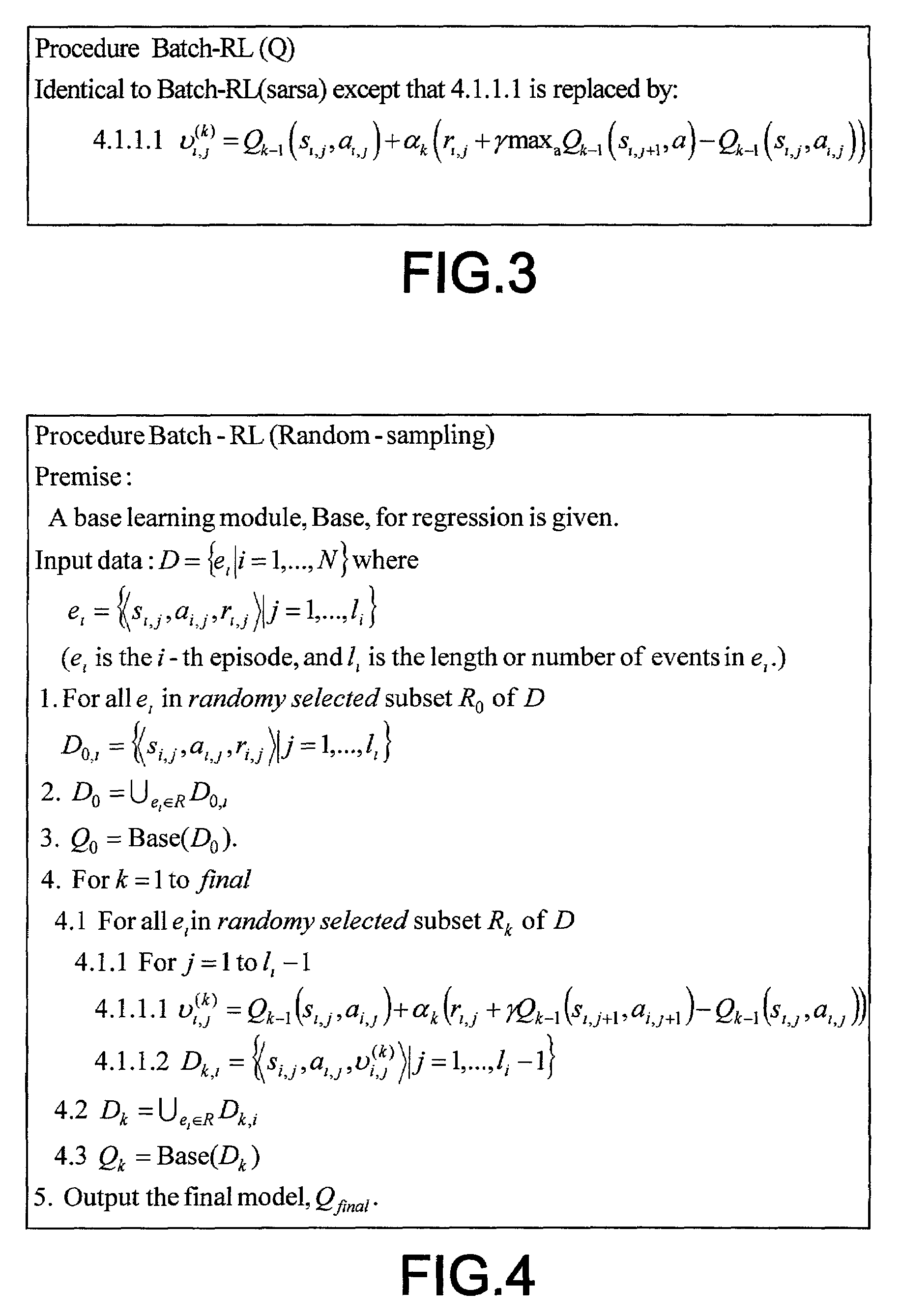System and method for sequential decision making for customer relationship management
a customer relationship management and decision-making technology, applied in the field of customer relationship management system and decision-making process, can solve the problems of increasing the profits generated by the customer, not being able to maximize the total profits generated, and the expected profit obtained by mailing the current promotion to a certain customer might exceed the current cost of mailing, so as to maximize the net present value of profits, accurate and efficient
- Summary
- Abstract
- Description
- Claims
- Application Information
AI Technical Summary
Benefits of technology
Problems solved by technology
Method used
Image
Examples
Embodiment Construction
[0058]Referring now to the drawings, and more particularly to FIG. 1, the present invention includes an inventive method 100 for sequential decision making (e.g., sequential cost-sensitive decision making) for customer relationship management according to the present invention.
[0059]As shown in FIG. 1, the inventive method 100 includes providing (110) customer data including stimulus-response history data (e.g., data pertaining to a customer's past response(s) to a stimulus or stimuli), and automatically generating (120) actionable (e.g., targeting) rules based on said customer data. Further, the actionable rules may be generated by estimating a value function using reinforcement learning (e.g., reinforcement learning and dynamic programming).
[0060]It should be noted that “customer data” may mean data regarding an entity that may be the subject of actionable (e.g., targeting) rules. Further, such an entity may include any entity (human or non-human) whose future behavior may be appr...
PUM
 Login to View More
Login to View More Abstract
Description
Claims
Application Information
 Login to View More
Login to View More - R&D
- Intellectual Property
- Life Sciences
- Materials
- Tech Scout
- Unparalleled Data Quality
- Higher Quality Content
- 60% Fewer Hallucinations
Browse by: Latest US Patents, China's latest patents, Technical Efficacy Thesaurus, Application Domain, Technology Topic, Popular Technical Reports.
© 2025 PatSnap. All rights reserved.Legal|Privacy policy|Modern Slavery Act Transparency Statement|Sitemap|About US| Contact US: help@patsnap.com



